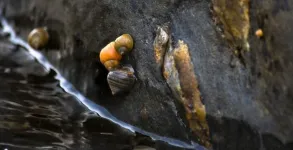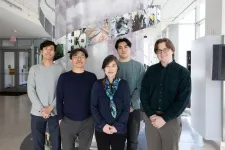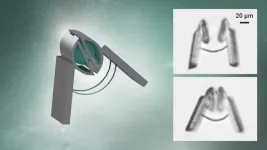(Press-News.org) Global biodiversity data used to make major policy and conservation investment decisions reflect legacies of social and political inequities. In a Policy Forum, Melissa Chapman and colleagues highlight this issue and its implications for global conservation policy and planning. The rapid rise of global biodiversity data repositories like the Global Biodiversity Information Facility (GBIF) – a data repository that synthesizes billions of species observations across the globe – has led to unprecedented insight into large-scale biodiversity patterns worldwide. Not only are these data important to ecologists, but they have also become crucial to governments and businesses seeking to create and implement multilateral conservation commitments, global investments, and biodiversity offset markets, which have wide-reaching implications for nature and people. However, according to Chapman et al., the systems that generate biodiversity data are complex, uneven, and ultimately human, capturing patterns of human processes across space and time. Here, the authors show how biodiversity observations in GBIF data do not reflect latitudinal gradients of biodiversity and instead trace social infrastructure like cities, roads, and the rise of biodiversity monitoring technology. Moreover, they also reveal signatures of armed conflict, the legacy effects of racist and/or colonialist policies, economic inequalities, and changes in political regimes at a variety of scales. Chapman et al. discuss the potential impact of the data disparities on global and national biodiversity conservation policies and ways in which their negative effects could be mitigated. The authors note that understanding the histories of biodiversity data is critical to ensuring that policy and practice informed by these data systems do not reproduce and exacerbate inequities. “Without directly addressing and correcting for social and political disparities in data, the conservation community will likely fall into the same traps that other domains do – entrenching the inequities of the past and present in future decision-making through data,” write Chapman et al.
END
Human histories shape the global biodiversity data used to make future decisions
2024-01-04
ELSE PRESS RELEASES FROM THIS DATE:
Studies reveal the evolutionary origin of unique traits in pitcher plants and marine snails
2024-01-04
In a pair of studies, researchers use different approaches to investigate how complex and innovative phenotypic traits evolve in plants and animals. “The amazing breadth of plant and animal diversity across the globe has evolved by circuitous paths, and resolving the complex history of genomes and traits unlocks new depths for understanding evolution,” writes Kathryn Elmer in a related Perspective. Although biological traits are constantly changing in populations, the emergence of a trait ...
Anti-CTLA-4 nanobodies promote antitumor immunity without inducing colitis in mice
2024-01-04
Microbiota-reactive T cells trigger colitis in mice harboring the microbiota of wild-caught mice following CTLA-4 blockade, according to a new study that reveals a major mechanism by which anti-CTLA-4 antibodies induce inflammatory toxicities during antitumor immune checkpoint inhibitor therapies. The findings could advance the development of next-generation CTLA-4 inhibitors that promote antitumor immune responses without triggering intestinal disease. Cancer immunotherapies with immune checkpoint inhibitors are widely used to promote antitumor immune responses in a range of human cancers. However, they can also lead to inflammatory ...
Editorial: Genuine images in 2024
2024-01-04
In an Editorial, Science Journals’ Editor-in-Chief, Holden Thorp, outlines changes to the publication’s editorial policies and practices for 2024, including plans to adopt the use of Proofig – an artificial intelligence-powered image-analysis tool – to detect altered images across all six of the Science family journals. Proofig is a tool that screens images for duplication and other types of manipulations. Although Science has been conducting “human-eye” image checks on some papers, the new tool will enhance Science’s review process and reduce ...
Biologists uncover the secrets of evolutionary change
2024-01-04
**Strictly embargoed until 19:00 GMT on Thursday 4 January 2024**
Biologists uncover the secrets of evolutionary change
Images available here
Big evolutionary changes happen gradually and not in giant leaps, a team of biologists led by the University of Sheffield have discovered
Using new methodology to study an evolutionary shift in the birthing style of marine snails, experts have been able to answer the long-debated question as to how game-changing innovations like flight, vision, and the bearing of live offspring happened
Understanding the evolutionary origin of these developments is important because ...
Does self-checkout impact grocery store loyalty?
2024-01-04
In an effort to reduce costs and improve customer satisfaction, retailers have implemented self-checkouts in stores across the country. They have become increasingly popular, but some brands like Walmart are removing self-checkouts in some locations while adding more in others. There are many advantages and disadvantages of self-checkout for both the customer and the retailer, but little formal research has investigated the impact of self-checkout on customers’ shopping experience. This led researchers from Drexel University’s LeBow College of Business to look at how self-checkout systems in grocery stores influence customer loyalty ...
Nanoparticle transport across the blood brain barrier increases with Alzheimer’s and age, study finds
2024-01-04
Neurodegenerative disorders such as Alzheimer’s disease affect more than 270 million people worldwide. AD is the leading cause of dementia, resulting in memory loss due to atrophy of neurons in the hippocampus, which is the part of the brain that regulates learning and memory. Nanoparticles designed to carry drugs have emerged as a strategy for treating different diseases, but in the context of neurodegenerative disease, much of the research has focused on developing strategies for getting nanoparticles across the blood brain barrier and into targeted regions of the brain.
In a new study, an interdisciplinary team of researchers at the University of Illinois Urbana-Champaign ...
Recent advances in medical applications of nanoparticles
2024-01-04
Nanoparticles have become an essential part of medicine, from aiding in diagnostic tests to serving as immunotherapy agents and more. Thanks to their ultrasmall size — around the thickness of a strand of DNA — these particles are adept at getting inside tissues and targeting precise areas. Here are three recent papers published in ACS journals that could expand the beneficial uses for nanoparticles, based on results in rats. The technology could be used to improve contraceptive methods, burn creams and arthritis ...
A high-tech research clinic on wheels
2024-01-04
Hispanic/Latina women with a history of hypertensive disorders of pregnancy (HDP) – conditions marked by high blood pressure during pregnancy – are more likely to have abnormalities in their heart structure and function decades later when compared with women without a history of HDP, according to a National Institutes of Health-supported study. The findings, published in the journal Hypertension, also suggest that while having high blood pressure later in life can contribute to these abnormalities, HDP play the greater role, significantly raising a woman’s risk of developing cardiovascular disease.
“The ...
Springs aboard – gently feeling the way to grasp the microcosmos
2024-01-04
These “picosprings” have remarkably large and tuneable compliancy and can be controlled remotely through magnetic fields (even deep within the human body) allowing articulated motion in microrobots as well as micromanipulations well beyond the state of the art.
Moreover, the extension of the picosprings can also be used visually to measure forces, for example propulsion or grasping forces, in interaction with other objects like cells. For example, these picosprings have been used to measure the locomotive propulsion force of sperm cells. The publication showcases these capabilities by demonstrating several ...
High folic acid and low B12 can affect fetal brain development in mice
2024-01-04
Folate is a B vitamin and a necessary nutrient to prevent neural tube defects, such as spina bifida. Folic acid, a synthetic form of folate, has been added to vitamins, breakfast cereals and other products in the U.S. and more than 80 other countries to ensure pregnant women get adequate amounts. However, new research suggests there may be such a thing as too much folic acid.
In a study published in Communications Biology, a Nature publication, researchers from the UC Davis School of Medicine and the UC Davis MIND Institute showed that imbalances in folic acid and vitamin B12 can alter brain development in mice.
“There's no doubt the introduction ...


